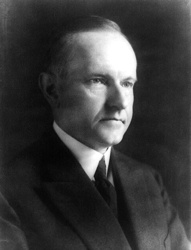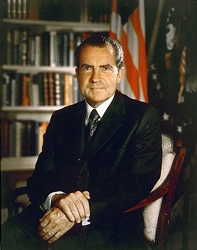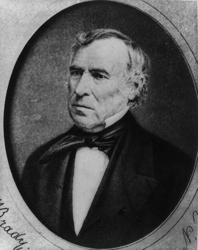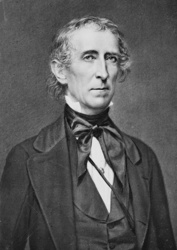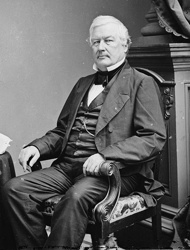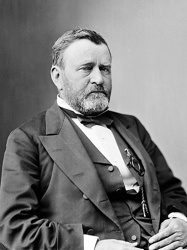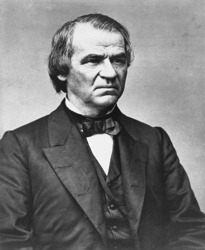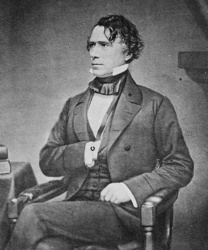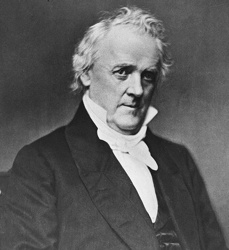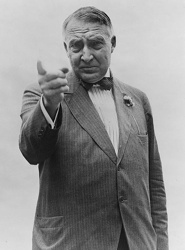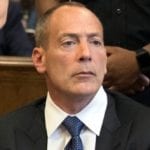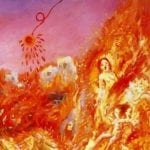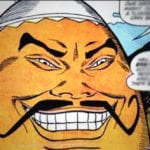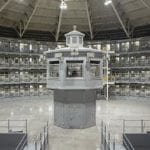 Technology
Technology  Technology
Technology  Humans
Humans 10 Everyday Human Behaviors That Are Actually Survival Instincts
 Animals
Animals 10 Animals That Humiliated and Harmed Historical Leaders
 History
History 10 Most Influential Protests in Modern History
 Creepy
Creepy 10 More Representations of Death from Myth, Legend, and Folktale
 Technology
Technology 10 Scientific Breakthroughs of 2025 That’ll Change Everything
 Our World
Our World 10 Ways Icelandic Culture Makes Other Countries Look Boring
 Misconceptions
Misconceptions 10 Common Misconceptions About the Victorian Era
 Mysteries
Mysteries 10 Strange Unexplained Mysteries of 2025
 Miscellaneous
Miscellaneous 10 of History’s Most Bell-Ringing Finishing Moves
 Technology
Technology Top 10 Everyday Tech Buzzwords That Hide a Darker Past
 Humans
Humans 10 Everyday Human Behaviors That Are Actually Survival Instincts
 Animals
Animals 10 Animals That Humiliated and Harmed Historical Leaders
Who's Behind Listverse?

Jamie Frater
Head Editor
Jamie founded Listverse due to an insatiable desire to share fascinating, obscure, and bizarre facts. He has been a guest speaker on numerous national radio and television stations and is a five time published author.
More About Us History
History 10 Most Influential Protests in Modern History
 Creepy
Creepy 10 More Representations of Death from Myth, Legend, and Folktale
 Technology
Technology 10 Scientific Breakthroughs of 2025 That’ll Change Everything
 Our World
Our World 10 Ways Icelandic Culture Makes Other Countries Look Boring
 Misconceptions
Misconceptions 10 Common Misconceptions About the Victorian Era
 Mysteries
Mysteries 10 Strange Unexplained Mysteries of 2025
 Miscellaneous
Miscellaneous 10 of History’s Most Bell-Ringing Finishing Moves
Top 10 Worst US Presidents
Here is a list to get the comments flowing! First of all, this list is not my personal opinion – it is compiled from the average score of each president over 12 surveys – taken between 1948 and 2005. Wikipedia has the complete historical rankings.
10. Calvin Coolidge 1923 – 1929
In 1919, three quarters of the Boston Police Force went on strike. Coolidge (then Governor of Massachusetts) had observed the situation throughout the conflict, but had not yet intervened. Furious that the mayor had called out state guard units, he finally acted. He called up more units of the National Guard, restored Police Commissioner Curtis to office, and took personal control of the police force. Curtis proclaimed that none of the strikers would be allowed back to their former jobs, and Coolidge issued calls for a new police force to be recruited. Many people criticized Coolidge as part of a general criticism of laissez-faire government. His reputation underwent a renaissance during the Reagan administration, but the ultimate assessment of his presidency is still divided between those who approve of his reduction of the size of government and those who believe the federal government should be more involved in regulating the economy.
9. Richard Nixon 1969 – 1974
In June, 1972, several of Nixon’s men were caught breaking into Democratic Party headquarters at the Watergate Hotel in Washington, DC – bringing to light the infamous Watergate Scandal. Nixon himself downplayed the scandal as mere politics, but when his aides resigned in disgrace, Nixon’s role in ordering an illegal cover-up came to light in the press, courts, and congressional investigations. Nixon owed back taxes, had accepted illicit campaign contributions, and had harassed opponents with executive agencies, wiretaps, and break-ins. In addition, he had ordered the secret bombing of Cambodia. Unlike the tape recordings by earlier Presidents, his secret recordings of White House conversations were revealed and subpoenaed and showed details of his complicity in the cover-up. Nixon was named by the grand jury investigating Watergate as “an unindicted co-conspirator” in the Watergate scandal. In light of his loss of political support and the near certainty of both his impeachment by the House of Representatives and his probable conviction by the Senate, he resigned on August 9, 1974, after addressing the nation on television the previous evening. He never admitted to criminal wrongdoing, although he later conceded errors of judgment.
8. Zachary Taylor 1849 – 1850
The slavery issue dominated Taylor’s short term. Although he owned slaves, he took a moderate stance on the territorial expansion of slavery, angering fellow Southerners. Taylor urged settlers in New Mexico and California to draft constitutions and apply for statehood, bypassing the territorial stage. New Mexico was too small to act but California — which had high population growth from the gold rush — wrote a constitution that did not allow slavery; the voters approved it and a new state government took over in December 1849 without Congressional approval. Southerners were furious with Taylor and with California. Taylor held a stormy conference with Southern leaders who threatened secession. He told them that if necessary to enforce the laws, he personally would lead the Army. Persons “taken in rebellion against the Union, he would hang … with less reluctance than he had hanged deserters and spies in Mexico.”
7. John Tyler 1841 – 1845
Tyler’s Presidency was rarely taken seriously in his time. Opponents usually referred him to as the “Acting President” or “His Accidency”. Tyler shocked Congressional Whigs by vetoing virtually the entire Whig agenda, twice vetoing Clay’s legislation for a national banking act following the Panic of 1837 and leaving the government deadlocked. Tyler was officially expelled from the Whig Party in 1841, a few months after taking office, and became known as “the man without a party.” In 1843, after he vetoed a tariff bill, the House of Representatives considered the first impeachment resolution against a president in American history. A committee headed by former president John Quincy Adams concluded that Tyler had misused the veto, but the impeachment resolution did not pass.
6. Millard Fillmore 1850 – 1853
Fillmore ascended to the presidency upon the sudden and unexpected death of President Taylor in July 1850. The change in leadership also signaled an abrupt political shift in the administration, as Fillmore removed Taylor’s entire cabinet, replacing them with individuals known to be favorable to the Compromise efforts. Fillmore signed into law the Fugitive Slave Act as a compromise between Southern slaveholding interests and Northern Free-Soilers. The act sought to force the authorities in free states to return fugitive slaves to their masters.
5. Ulysses S Grant 1869 – 1877
Grant achieved international fame as the leading Union general in the American Civil War. The first scandal to taint the Grant administration was Black Friday, a gold-speculation financial crisis in September 1869, set up by Wall Street manipulators Jay Gould and James Fisk. They tried to corner the gold market and tricked Grant into preventing his treasury secretary from stopping the fraud. The most famous scandal was the Whiskey Ring of 1875, exposed by Secretary of the Treasury Benjamin H. Bristow, in which over 3 million dollars in taxes were stolen from the federal government with the aid of high government officials. Although Grant himself did not profit from corruption among his subordinates, he did not take a firm stance against malefactors and failed to react strongly even after their guilt was established. Grant’s career is also marred by rumors of anti-Semitism due to his involvement with the infamous General Order Number 11.
4. Andrew Johnson 1865 – 1869
Johnson succeeding to the presidency upon the assassination of Abraham Lincoln. Johnson vetoed the first civil rights bill, stating that it gave “a perfect equality of the white and black races in every State of the Union.” In a letter to the governor of Missouri he wrote: “this is a country for white men, and by God, as long as I am President, it shall be a government for white men.” The Republicans in congress overrode his veto (the Senate by the vote of 33:15, the House by 182:41) and the Civil Rights bill became law. Johnson tried to remove Edward Stanton as Secretary of War directly violating the Tenure of Office Act which Johnson had vetoed. He was impeached (and is the first president to be so) but found innocent by only one vote.
3. Franklin Pierce 1853 – 1857
Two months before assuming his place as President, Pierce watched his son die in a train accident. He took office nervously exhausted. The most controversial event of Pierce’s presidency was the Kansas-Nebraska Act, which repealed the Missouri Compromise and reopened the question of slavery in the West. The Act also caused widespread outrage in the North and spurred the creation of the Republican Party, a sectional Northern party that was organized as a direct response to the bill. Pierce is ranked among the least effective Presidents as well as an indecisive politician who was easily influenced. He was unable to command as President or to provide the required national leadership. Pierce is the only elected president (as of 2007) not to be renominated by his party for a second term.
2. James Buchanan 1857 – 1861
In his inaugural speech, Buchanan stated that the slavery issue was of “little practical importance” because the Supreme Court was about to settle it. Two days later they announced the Dred Scott decision in which it ruled that people of African descent, whether or not they were slaves, could never be citizens of the United States, and that Congress had no authority to prohibit slavery in federal territories. Buchanan was widely believed to have been personally involved in the outcome of the case. Additionally, Buchanan’s administration was troubled by the Panic of 1857 – a sudden downturn in the US economy. Before Buchanan left office, seven slave states seceded, the Confederacy was formed, all arsenals and forts in the seceded states were lost (except Fort Sumter and two remote ones), and a fourth of all federal soldiers surrendered to Texas troops. Historians in 2006 voted his failure to deal with secession the worst presidential mistake ever made.
1. Warren G Harding 1921 – 1923
Harding’s term as president was beset with scandal – both personal and political. Albert B Fall, Harding’s Secretary of the Interior, became the first member of a presidential cabinet to go to jail for his role in the Teapot Dome affair. When Harding was elected, he raised many of his friends (known as the Ohio Gang) to prominent political positions. Some of these appointees used their power to rob the government. Harding is reputed to have said: “I have no trouble with my enemies, but my damn friends, my God-damned friends… they’re the ones that keep me walking the floor nights!”
Afterword
In the original list, William Harrison ranked 5th worst, but as his term was so short I do not think he can be fairly included. Additionally, James A Garfield ranked at number 9, but with the second shortest presidential term (6 months) I have also excluded him. As a result, Nixon, at number 11, moved in to 10th place, and Coolidge, at number 12, moves in at position 10.
As he is not on the list, I am sure you are all eager to know how the current President, George W Bush, fared. He ranked at number 21 worst, followed closely at 22nd worst by Bill Clinton. Jimmy Carter ranked at 14th worst.
